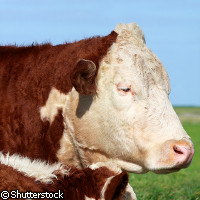EU-funded scientists develop new test to screen for steroid abuse in cattle
An EU-funded team of researchers from the UK and Ireland has unveiled a new test to detect illegal steroid use in cattle. The Biocop ('New technologies to screen multiple chemical contaminants in foods') project, financed with EUR 9.6 million under the Sixth Framework Programme (FP6), has developed an innovative screening technique that is cost-effective, accurate and convenient. The results are published in the journal Analytical Chemistry. An estimated 10% of European cattle are illegally treated with growth enhancers such as anabolic steroids; however, current abuse-detection methods return a mere 0.02% positive result. According to the study, led by Professor Chris Elliot of Queen's University Belfast, this implies that there are 'serious problems with the existing control systems, at least one of which is infrequency of testing.' Although the EU has established a ban on the use of anabolic steroids in animals, their widespread abuse is an ongoing problem. It can be easily disguised because, among other things, cattle are tested for compounds that occur naturally. The use of these agents raises serious health concerns; several studies have demonstrated a potential link between certain growth-enhancing steroids and cancer. 'In recent years,' explained Professor Elliot, 'a trend of administration of very low-dose cocktails of naturally occurring hormones has made conventional forms of analysis even more problematic. Even if minute traces of steroids can be detected, proving definitive illegal administration under these circumstances is close to impossible.' In this latest research, the scientists used a commercially available blood-chemistry analyser to detect metabolic changes that usually occur after growth agents have been used. They measured 20 different compounds, such as creatinine, proteins, cholesterol, and enzymes in the blood of steer (injected with nortestosterone) and heifers (injected with oestrogen) over the course of 42 days, and compared the results with a control group. Measuring metabolic markers (e.g. proteins and cholesterol), rather than looking for the specific doping agents, allowed the researchers to generate 'metabolic profiles' of the treated and untreated animals. None of the markers examined could be used on its own to identify a doped animal; but instead, a particular combination of markers put together in a profile could distinguish between the two groups of animals. The method correctly identified the steroid-treated cattle between 91% (nortestosterone) and 96% (oestrogen) of the time. In addition to the high accuracy of the tests, the cost per analysis to use this high-throughput method was quite low. The equipment is already commercially available, and far more samples can be processed in a shorter time than is currently possible. Pending future studies, the researchers believe that on-site steroid testing with portable (and affordable) instruments should be feasible. However, the study cautions that because EU legislation requires unequivocal proof of steroid administration, their technique would be applied on a large scale to screen for suspicious cases that would then be subjected to further analysis. The researchers looked at only one steroid at a time, which would elicit a smaller response than might be seen in an animal dosed with a cocktail of hormone treatments. So the next step for the Biocop researchers is to establish a full database of metabolic compounds that circulate in the blood of animals treated with illegal steroids. 'It will be important to build a library of metabolic data from animals treated with a range of anabolic agents to get a more complete panel against which to test suspected cattle,' said Professor Elliot, adding that the effort should be carried out on a pan-European level. 'The introduction of low-cost, herd-based clinical chemistry profiling may prove to be a highly valuable weapon in the armoury of those wishing to stamp out hormone abuse in Europe,' the study concludes. Biocop is funded under the FP6 Thematic area 'Food quality and safety'. The purpose of the project is to provide new or improved technologies for testing the quality and safety of food, and to supply regulators, consumers and industry with long-term solutions to the complex problems associated with chemical contaminants.
Countries
Ireland, United Kingdom



